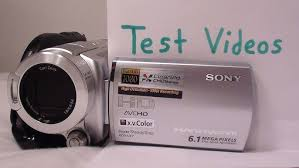A Glimpse into the Past: The Dawn of 3CMOS Technology
When Sony launched the DCR-PC1000E in 2005, it wasn’t just another digital camera—it was a revolutionary breakthrough in consumer video technology. As the world’s first 3CMOS sensor digital camera, this innovative device marked a significant shift in how consumers could capture their precious moments with unprecedented color accuracy and image quality.
The DCR-PC1000E represented Sony’s bold venture into CMOS territory, challenging the prevailing CCD dominance with a camera that promised superior color reproduction and reduced power consumption. For photography enthusiasts and family users alike, this camera opened new possibilities in digital videography that would influence years of technological development.
Key Features That Made the DCR-PC1000E Exceptional
Revolutionary Imaging System
At the heart of the PC1000E’s innovation was its three 1/6-inch CMOS sensors, each dedicated to capturing one of the primary colors: red, green, and blue. This tri-sensor system allowed the camera to process each color channel independently, resulting in significantly improved color accuracy and richer tonal gradations compared to single-sensor cameras.
The camera offered an effective dynamic pixel of 2.01 million for video capture and 2.07 million for still images, with the ability to generate static photos equivalent to 2.8 million pixels through Sony’s pixel shift technology. This meant users could capture still images at resolutions up to 1920×1440 (4:3) or 1920×1080 (16:9), impressive figures for a consumer-grade device in 2005.
Superior Optical Components
Complementing its advanced sensor system was the *Carl Zeiss Vario-Sonnar T lens**, renowned for its sharpness and color fidelity. With a 10x optical zoom and a focal length range of 2.77mm-27.7mm, this lens provided versatility for various shooting scenarios. The lens featured an automatic hidden blade-style lens cover, offering both convenience and protection.
User-Friendly Design
Sony designed the PC1000E with user experience as a priority. Its upright, cylindrical body measured 54.5 x 117.1 x 102.1 mm and weighed only 400g, making it comfortably portable. The camera featured a 2.7-inch 16:9 wide hybrid LCD screen with 123,000 pixels that supported touch operation—a premium feature at the time.
The intuitive 3D rotary menu system with full Chinese localization made the camera accessible to beginners, while the “Easy Mode” allowed point-and-shoot operation by automating most settings. For advanced users, manual controls for focus, exposure compensation, and white balance (adjustable in ±4 steps) provided creative flexibility.
Technical Comparison: DCR-PC1000E vs. Contemporary Cameras
The table below highlights how the DCR-PC1000E compared to other technologies available during its era:
*Table: Sony DCR-PC1000E Technical Specifications Comparison*
| Feature | Sony DCR-PC1000E | Typical Single-CCD Cameras (2005) | Significance |
|---|---|---|---|
| Sensor System | Three 1/6-inch CMOS sensors | Single CCD sensor | Revolutionary approach for better color separation and accuracy |
| Lens | Carl Zeiss Vario-Sonnar T* with T* coating | Standard or Carl Zeiss without T* coating | Superior light transmission with reduced flare and ghosting |
| Color Processing | RGB separate processing | Composite color processing | More accurate color reproduction and richer tonal gradations |
| Power Consumption | Approximately 63% lower than comparable CCD models | Higher power consumption | Longer battery life and reduced heat generation |
| Widescreen Capability | True 16:9 recording with 2.7-inch widescreen LCD | Mostly 4:3 with limited widescreen support | Future-proof format for evolving display standards |
| Still Image Resolution | Up to 1920×1440 (2.8MP equivalent) | Typically lower resolution (1-2MP) | Better print quality and more flexibility for photo applications |
Legacy and Impact on Modern Videography
While the DCR-PC1000E had limitations—such as the absence of an optical image stabilizer and relatively modest low-light performance (7 lux minimum illumination)—its technological influence was profound. Sony’s experimentation with CMOS technology in this camera paved the way for the widespread adoption of CMOS sensors in consumer and professional imaging equipment.
The camera’s energy-efficient design, consuming approximately 63% less power than comparable CCD models, demonstrated CMOS’s potential for portable devices where battery life is crucial. This advantage has become increasingly important in today’s mobile-first world.
For collectors and vintage technology enthusiasts, the PC1000E remains a historically significant artifact representing a key transition point in digital imaging technology. Its balanced approach to color reproduction—prioritizing natural accuracy over artificial saturation—foreshadowed the preferences of today’s content creators who value authentic representation.
Conclusion: Why the DCR-PC1000E Still Matters
The Sony DCR-PC1000E stands as a testament to innovation and risk-taking in consumer electronics. While it may seem outdated in an age of 4K video and computational photography, this groundbreaking camera played a crucial role in advancing digital imaging technology.
For modern readers, understanding the DCR-PC1000E’s contributions helps appreciate the evolution of video technology and the importance of pioneering products that challenge conventional thinking. It reminds us that today’s standard features often began as revolutionary concepts in products like this remarkable camera.
